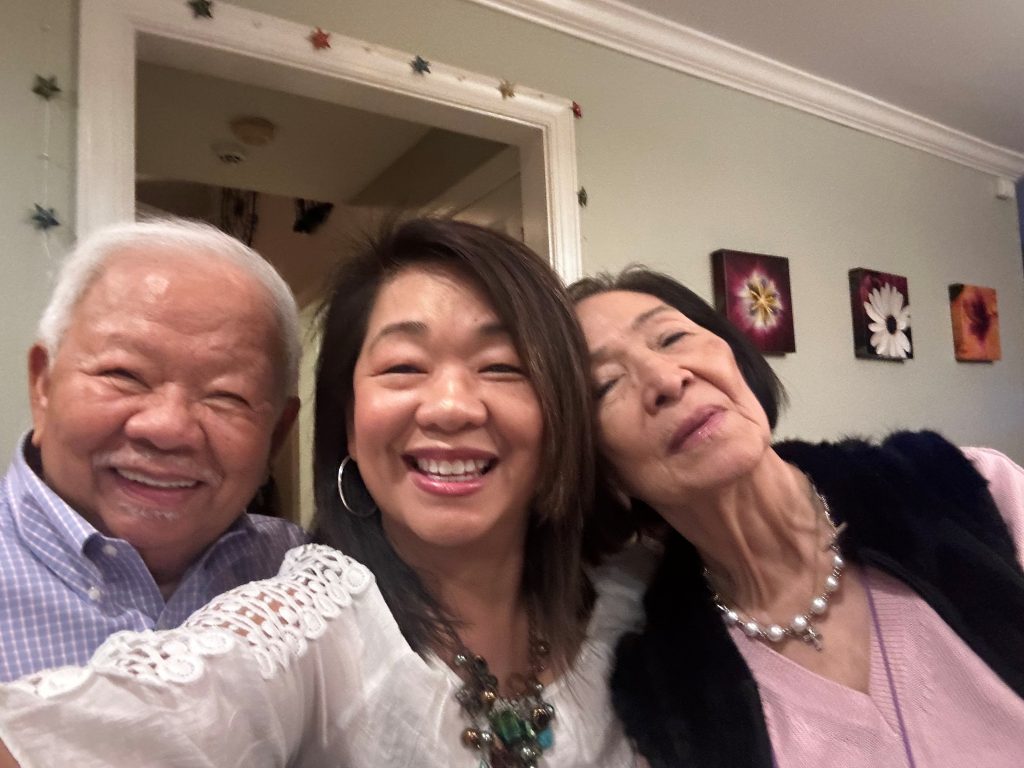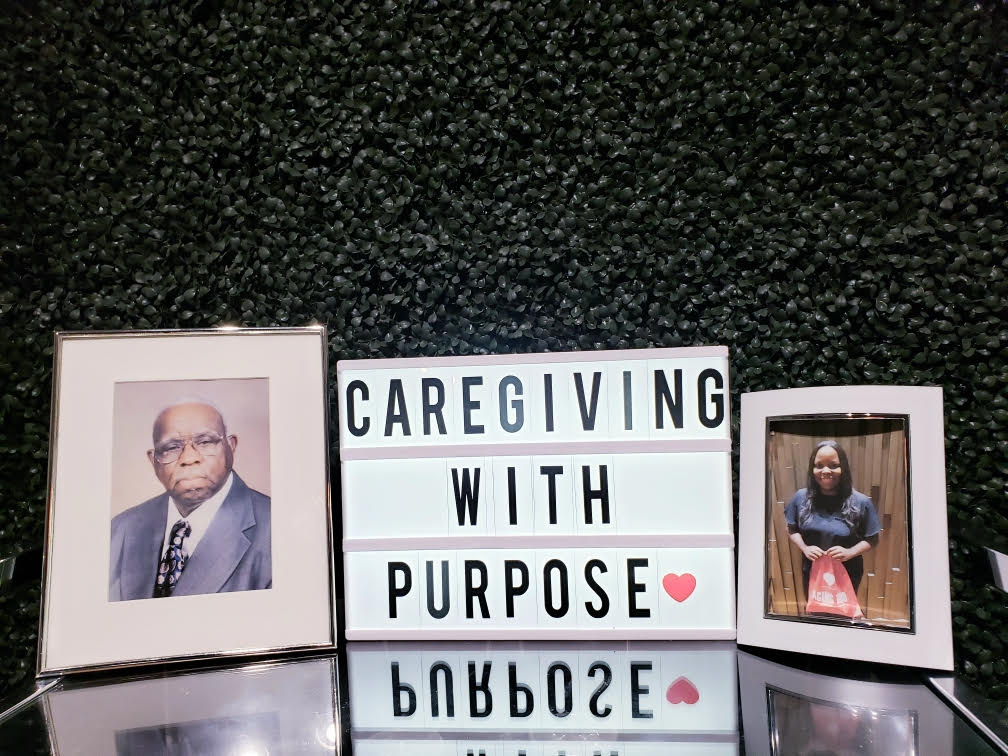Abstract:
As the number of older adults with chronic medical illnesses and substance use disorders (SUD) and especially opioid use disorder (OUD) increases, so does the need for post-acute care services in skilled nursing facilities (SNFs). Unfortunately, care delivery in SNFs is not set up to match the needs of older adults with SUD due to societal, regulatory, financial, and educational barriers. This article examines some of these barriers and areas for improvement for the treatment of older adults with addiction disorders in SNFs.
Key Words:
Skilled nursing facility, post-acute care, long-term care, nursing home, substance use disorder, opioid use disorder, barriers to care, older adults
The following scenario describes an older adult with opioid use disorder (OUD) who requires skilled nursing facility services after a hospitalization for a hip fracture. It highlights the nature and complex barriers faced by older adults with OUD, which have only been exacerbated during the COVID-19 pandemic.
A Case Study
John D is a 66-year-old male with opioid use disorder (OUD) and bipolar disorder, who was in a motor vehicle accident and suffered a left femur fracture, requiring surgical repair. His postsurgical pain was treated with hydromorphone. He is recovering in a skilled nursing facility (SNF) during the COVID-19 pandemic. His postoperative course was complicated by acute opioid withdrawal, which was treated symptomatically. In the past, Mr. D was successfully treated for OUD with methadone maintenance dispensed in an opioid treatment program (OTP). But for the past year he has been out of addiction treatment and has been using heroin. He would like to get back on methadone for his OUD because it had been helpful. He is continuing rehabilitation and care in an SNF.
Upon admission to the SNF, John reported intense acute postsurgical pain, which required escalating doses of hydromorphone. He hasn’t seen his psychiatrist in years, and his bipolar disorder has been treated by his primary care physician. Various providers have noted that he suffers from poor insight and judgement, and he reports suffering from memory problems, citing difficulties with recall. Via physical therapy his pain was reduced and his function improved, and he progressed from using a wheelchair to ambulating with a walker.
He expressed interest in starting methadone maintenance therapy due to persistent cravings for opioids, but the facility was not contracted with an OTP, nor was there a payor source for his transportation to an OTP, setting up clear barriers to this treatment.
The COVID-19 pandemic also prohibited him from being seen by the SNF’s psychiatrist and mental health social worker. When there were pauses in physical therapy and other ancillary services such as dental services, John, like the other patients, spent the entire day in his room, his television and phone his only connections to the outside world.
As cases of COVID-19 decreased and outpatient clinics reopened, physical therapy in the SNF also resumed. John was still taking hydromorphone for pain, but much less than he had previously. He independently booked an outpatient dental appointment and transportation, citing a loose tooth, but did not return to the facility after the appointment. Staff tried to reach him without success. He presented himself to a police station the next day after using heroin as he didn’t know how to get back into the facility. The SNF declined his return, citing that they could no longer care for him.
Treating Opioid Addiction in Older Adults
Rising rates of opioid addiction in older adults is an important public health concern. In 2018, of the 67,367 drug overdose deaths, 69.5 percent (46,802) of them involved an opioid, with 3.8 percent (2,012) occurring in adults ages 65 and older, an 11.8 percent relative increase compared to 2017 (Wilson et al., 2020). As the number of older adults in the population grows, the proportion of older adults seeking treatment for OUD is increasing. From 2012 to 2015, there was a 53 percent increase in first-time treatment for OUD by adults older than age 55, with the primary treatment sought for heroin (Huhn et al., 2018).
Patients in need of treatment for SUD are seen in hospitals, ambulatory clinics, and in post-acute care settings such as rehabilitation facilities and SNFs. Older adults often experience multiple transitions of care during the course of an illness, transitioning from an acute hospitalization to an SNF for short-term rehabilitation, before returning home and accessing homecare services. SNFs are facilities that meet Medicare Part A requirements of participation, providing subacute or short-term rehabilitation. They also often are certified as nursing facilities (NFs) providing long-term care services and often are referred to as long-term care (LTC) facilities. Patients in LTC facilities typically require assistance by nursing and nursing assistant staff to perform activities of daily living due to medical and/or cognitive functional impairments.
‘Rising rates of opioid addiction in older adults is an important public health concern.’
In 2018, almost 1.5 million Medicare fee-for-service beneficiaries used SNF services at least once, and approximately one-fifth of hospitalized beneficiaries were discharged to SNFs at a cost of $28.5 billion dollars (Medicare Payment Advisory Commission [MedPAC], 2020). Little research is available on how many Medicare beneficiaries with SUD or OUD have used post-acute and long-term care services, but it is reasonable to expect sizeable growth of this cohort as the proportion of older adults in the general population increases. Societal, regulatory, financial, and educational barriers mean that patient-centered care, including care that matches the needs of older adults with SUD, is not provided in most SN and LTC facilities. Barriers and areas for improvement in the treatment of older adults with SUD in SNFs are examined below.
Effects of Stigmatization
A patient with SUD often is not viewed as a “traditional” nursing home patient and often faces negative assumptions as he or she accesses post-acute care. Stigma associated with SUD can affect personal relationships, career progression, and healthcare use. A systematic review by van Boekel et al. (2013) found that healthcare professionals in general have negative attitudes toward patients with SUDs. This can lead to poor communication between healthcare provider and patient, as biases may unconsciously taint the therapeutic alliance. The consequences of stigmatization can go beyond face-to-face interaction and reach a systemic level.
Hospitalized patients with SUD who need skilled services and-or rehabilitation are often denied admission by SNFs (Wakeman and Rich, 2017). It is particularly difficult for patients with histories of injection drug use who require a prolonged course of intravenous antibiotics for infectious complications such as endocarditis or osteomyelitis, to transition from the hospital to a rehabilitation facility. Post-acute care sites may be reluctant to provide services to this population, as there may be concerns that the intravenous catheter will be used to inject illicit drugs.
Regulations on the Use of Medications for Opioid Use Disorder
There is increasing neuroscience support that addiction disorders are diseases of the brain characterized by neurobiological changes (Volkow, Koob, and McLellan, 2016). Opioids stimulate naturally occurring receptors involved in the brain’s reward system, and increase the neurotransmitter dopamine (National Academies of Sciences, Engineering, and Medicine [NASEM], 2019). Volkow, Koob, and McLellan (2016) noted that while drug use results in increased sensitization of the dopamine response and active cravings, the brain’s reward system is reset to an attenuated release of dopamine in the addicted brain, which lessons feelings of euphoria over time. Furthermore, circuitries of the brain involved in executive function, decision-making, and exercising controlled responses are weakened, manifesting as repeated relapse to drug use.
Evidence-based medical treatment can help to restore healthy brain function and lead to improved quality of life. Three medications have been approved by the U.S. Food and Drug Administration for the treatment of OUD: methadone, buprenorphine, and naltrexone (Substance Abuse and Mental Health Services Administration [SAMHSA], 2020).
Methadone, a full opioid receptor agonist, reduces opioid withdrawal and cravings and blocks opioids’ euphoric effects. It is the most studied medication for OUD and considered by the World Health Organization (WHO) to be an “essential medication”—one that is a safe and effective treatment option for SUD (WHO, 2019).
Buprenorphine is an opioid receptor partial agonist that, in addition to having similar effects as methadone, has a lower risk of respiratory depression and also is labeled by the WHO to be an essential medication. It is available in sublingual, buccal, subdermal implant, and subcutaneous extended release injectable formulations.
Naltrexone is an opioid receptor antagonist that blocks the effects of opioids and is available in oral doses or in an intramuscular extended-release injection. It is not a scheduled medication and can be prescribed by any healthcare provider.
Methadone, buprenorphine, and extended release naltrexone injections were found in clinical trials to be more effective in reducing illicit opioid use than no medication, and were cost effective in reducing overall healthcare use. Methadone and buprenorphine also have been associated with reduced risk of overdose-related deaths (SAMHSA, 2020).
SNFs that are willing to accept patients with OUD do so while working within strict federal and state regulations on the administration of medications for opioid use disorder. The use of methadone for treatment of OUD faces significant hurdles in SNFs, as they are prohibited per Drug Enforcement Agency (DEA) regulations to start or continue methadone treatment without the patient’s enrollment in a licensed OTP (Pytell, Sharfstein, and Olsen, 2020).
Federal regulations allow for a patient’s continuation of methadone while in an acute care hospital, but not in an SNF setting. In Massachusetts, for example, certain SNFs that have a working model to treat patients on methadone often partner with licensed community OTPs. Daily morning transport is then arranged for patients to the OTP. This can be complicated, however, dependent upon the type of transportation available and when the patient is being treated for other active medical problems that may limit their mobility (e.g., a complex post-surgery wound).
The use of methadone for the treatment of OUD is not covered by Medicare Part D and retail pharmacies are prohibited from dispensing it for this purpose. Another barrier to its use in SNFs is the absence of an onsite or full-time SNF pharmacist to oversee the regulations associated with methadone dispensing (Baird and Griese, 2018). DEA regulations should be amended to allow appropriate SNF staff to continue dispensing methadone for the treatment of OUD. Limits of Medicare and Medicaid coverage of methadone outside of an OTP should be lifted, to increase access to SNF patients with OUD to methadone treatment. If these regulatory and financial constraints were lifted, SNFs have the opportunity to invest in a full-time onsite pharmacist to ensure compliance with methadone administration requirements.
Other treatment options for OUD are buprenorphine and buprenorphine-containing products. Unlike methadone, these can be dispensed at a retail pharmacy and the patient does not need to be enrolled in an OTP to obtain them. To prescribe buprenorphine, providers must obtain a DEA waiver by completing the required training (eight hours for physicians and twenty-four hours for nurse practitioners and physician assistants) and registering with the DEA.
In addition to regulatory constraints, funding streams to SNFs potentially can impact patients with SUD.
When caring for a patient on buprenorphine, the SNF can choose to accept prescriptions from the waivered community prescriber or SNF clinician. While the number of waivered physicians increased between 2017 and 2012 across rural and urban settings, and the inclusion of nurse practitioners and physician assistants has increased access in urban (45 percent and 24 percent) and rural counties (13.8 percent and 4.6 percent), access remains an issue, especially in rural areas. There, 56 percent of counties lack a buprenorphine provider (Andrilla et al., 2019). It is unknown how many of these waivered providers work in SNFs or other post-acute care settings. Barriers to medications for opioid use disorder in post-acute care settings would be reduced if SNF clinicians obtain buprenorphine waivers to increase patient access.
Reimbursement Trends
In addition to regulatory constraints, funding streams to SNFs potentially can impact patients with SUD. SNFs predominantly comprise two patient cohorts: short-term rehabilitation patients and LTC patients. In general, Medicare pays for rehabilitation patients (13 percent), while care to residential and LTC patients is generally paid by Medicaid (62 percent) or via private pay or other means (25 percent) (Kaiser Family Foundation, 2020). Despite the smaller proportion of short-term rehabilitation patients, Medicare reimburses at a higher rate compared to Medicaid, and facilities often lose money providing care to LTC patients (MedPAC, 2020). To attain economic stability, often facilities admit more of the higher revenue short-term rehabilitation patients to compensate for the cost of caring for LTC patients (Grabowski and Mor, 2020).
Despite higher Medicare reimbursement rates, this payment model fails to meet all the needs of a patient with addiction disorders. Medicare reimbursement is narrowly limited to the medical reasons a patient needs facility-based skilled nursing and rehabilitation care. For instance, when a patient is admitted to an SNF after an acute hospitalization for a hip fracture, the cost of the skilled nursing and rehabilitation services related to the hip fracture is readily reimbursed, including transportation cost to the orthopedic specialist. However, the cost of transportation to a non-urgent appointment for ophthalmology services is not covered and the patient will be billed. Similarly, the transportation cost for travel back and forth to an OTP for a patient on methadone will not be reimbursed by Medicare if the initial hospitalization is not related to some need for skilled care associated with an acute exacerbation of OUD.
Prior to the COVID-19 pandemic, many SNFs were investing resources to implement the newest Centers for Medicare & Medicaid Services payment model, the Patient Driven Payment Model (PDPM). The PDPM strives to improve payment accuracy of resources and services for medically complex and high care needs patients, instead of reimbursement being driven largely by therapy hours. One way this is accomplished is via a scoring system that emphasizes skilled nursing services. Reimbursement for a hip fracture patient at an SNF will be increased when concurrent wound care or IV medication needs exist. Unfortunately, the scoring system does not allow for diagnoses of SUD or OUD. This is an opportunity for PDPM to recognize that SNFs can be a setting for older adults with SUD and concurrent complex medical needs, if payment incentives are aligned with the care needs of this patient population.
Improving Care of Older Adults with SUD in Post-acute Care
Geriatricians and providers who practice in post-acute and LTC settings are uniquely positioned to affect the care of older adults with SUD in these settings. As this patient population ages, substance use is associated with a concurrent increase in chronic medical problems, often accompanied by pain, polypharmacy, and geriatric syndromes (Han, 2018). Older adults also suffer from a relatively increased progression of associated comorbidities and adverse drug effects (Yarnell, 2015). Additionally, older adults with SUD have higher rates of chronic health conditions and mental health disorders than do their peers without SUD (United Nations Office on Drugs and Crime [UNODC], 2018).
Many clinicians across disciplines and including geriatricians, are, unfortunately, not adequately trained to treat addiction disorders as part of their educations (Wood, Samet, and Volkow, 2013). Health professional education, including medical education, is an important part of addressing the opioid crisis and can empower providers with safer opioid prescribing strategies (Alford, 2016). Substance use in older adults combined with chronic medical conditions presents an opportunity for geriatric principles to be integrated into the field of addiction medicine and vice versa. Specifically, Han (2018) points out that the harm-reduction principles in SUD treatment are complementary to the person-centered and shared decision-making approach in geriatrics.
Geriatric training, which integrates addiction medicine competencies, can enhance the care and understanding of older adults with addiction disorders. Provider education should include nursing, physical therapy, and behavioral health colleagues who practice in LTC facilities. Education not only increases care provider knowledge and comfort level, but also counters misinformation and negative beliefs to destigmatize patients with SUD.
SNFs often contract with psychiatric consultant services for short-term rehabilitation and LTC patients if needed. Consultants provide psychiatric medication recommendations for mental health disorders, one-to-one psychosocial therapy, and escalation to inpatient psychiatric hospitals. An integrated behavioral health model is well suited to the SNF environment, especially if psychiatric consultants develop expertise with patients with addiction disorders. Patients could have access to both medication treatment from their SNF provider and psychopharmacology and behavioral health support from the psychiatric consultants. Recent experience with telehealth visits during the COVID-19 pandemic may provide an opportunity to expand this important component of patient care. SNFs can further strengthen their commitment to the care of older adults with SUD by extending contractual relationships to their local addiction medicine providers. Such partnerships are especially helpful for patients with complicated SUD histories, where there is an opportunity for SNF providers to work with addiction medicine specialists in managing treatment in this vulnerable population.
Conclusion
As the number of older adults with chronic medical illnesses, including SUD, increases, there is a growing need for post-acute care such as SNF services. These patients unfortunately face multiple barriers in post-acute care, all of which have been exacerbated by the pandemic, as the case outlined at the beginning of this article illustrates. However, an opportunity exists for SNFs to become a space where older adults with SUD and complex care needs can thrive. Solutions must consider regulatory, financial, advocacy, and educational opportunities, to maximize the importance of care to older adults with addiction disorders.
Acknowledgements
This publication was made possible by Grant Number K01HP33450 from the Health Resources and Services Administration (HRSA), an operating division of the U.S. Department of Health and Human Services. Its contents are solely the responsibility of the authors and do not necessarily represent the official views of the Health Resources and Services Administration or the U.S. Department of Health and Human Services.
Rossana Lau-Ng, MD, MBA, CMD, is an instructor of Medicine in the Department of Medicine; Hollis Day, MD, MS, MHPE, is an associate professor of Medicine; and Daniel P. Alford, MD, MPH, is a professor of Medicine, all at Boston University School of Medicine in Boston, Massachusetts.
References
Alford, D. P. 2016. “Opioid Prescribing for Chronic Pain-Achieving the Right Balance Through Education.” New England Journal of Medicine 374(4): 301-3.
Andrilla, C. H. A., et al. 2019. “Geographic Distribution of Providers with a DEA Waiver to Prescribe Buprenorphine for the Treatment of Opioid Use Disorder: A 5-Year Update.” Journal of Rural Health 35(1): 108-12.
Baird, J. and Griese, B. 2018. “Unfortunately, Turning Away Opioid Addicts Might be Necessary.” McKnight’s Long-Term Care News, May 7. Retrieved June 1, 2020.
Grabowski, D. C., and Mor, V. 2020. “Nursing Home Care in Crisis in the Wake of COVID-19.” JAMA published online May 22, 2020. Retrieved June 1, 2020.
Han, B. H. 2018. “Aging, Multimorbidity, and Substance use Disorders: The Growing Case for Integrating the Principles of Geriatric Care and Harm Reduction.” International Journal of Drug Policy 58: 135-6.
Huhn, A. S., et al. 2018. “A Hidden Aspect of the U.S. Opioid Crisis: Rise in First-time Treatment Admissions for Older Adults with Opioid Use Disorder.” Drug and Alcohol Dependence 193: 142-7.
Kaiser Family Foundation. 2020. “Distribution of Certified Nursing Facility Residents by Primary Payer Source, Timeframe 2017.” Retrieved June 22, 2020.
Medicare Payment Advisory Commission (MedPAC). 2020. “Chapter 8: Skilled Nursing Facility Services.” Report to the Congress: Medicare Payment Policy. Retrieved June 8, 2020.
National Academies of Sciences, Engineering, and Medicine (NASEM). 2019. Medications for Opioid Use Disorder Save Lives. Washington, DC: The National Academies Press.
Pytell, J. D., Sharfstein, J. M., and Olsen, Y. 2020. “Facilitating Methadone Use in Hospitals and Skilled Nursing Facilities.” JAMA Internal Medicine 180(1): 7-8.
Substance Abuse and Mental Health Services Administration (SAMHSA). 2020. Medications for Opioid Use Disorder. Treatment Improvement Protocol (TIP) Series 63. Publication No. PEP20-02-01-006. Rockville, MD: SAMHSA. Retrieved June 30, 2020.
United Nations Office on Drugs and Crime (UNODC). 2018. World Drug Report Booklet 4: Drugs and Age, Drugs and Associated Issues Among Young People and Older People. New York, NY: United Nations. Retrieved June 12, 2020.
van Boekel, L. C., et al. 2013. “Stigma Among Health Professionals Towards Patients with Substance Use Disorders and its Consequences for Healthcare Delivery: Systematic Review.” Drug and Alcohol Dependence 131(1-2): 23-35.
Volkow, N. D., Koob, G. F., and McLellan, A.T. 2016. “Neurobiologic Advances from the Brain Disease Model of Addiction.” New England Journal of Medicine 374(4): 363-71.
Wakeman, S. E., and Rich, J. D. 2017. “Barriers to Post-Acute Care for Patients on Opioid Agonist Therapy; An Example of Systematic Stigmatization of Addiction.” Journal of General Internal Medicine 32(1): 17-19.
Wilson, N., et al. 2020. “Drug and Opioid-Involved Overdose Deaths—United States, 2017-2018.” MMWR Morbidity and Mortality Weekly Report 69(11): 290-7.
Wood, E., Samet, J. H., and Volkow, N. D. 2013. “Physician Education in Addiction Medicine.” JAMA 310(16): 1673-4. World Health Organization. 2019.
World Health Organization Model List of Essential Medicines, 21st List. Geneva: World Health Organization. Licence: CC BY-NC-SA 3.0 IGO
Yarnell, S. C. 2015. “Cocaine Abuse in Later Life: A Case Series and Review of the Literature.” Primary Care Companion for CNS Disorders 17(2). doi:10.4088/PCC.14r01727.













